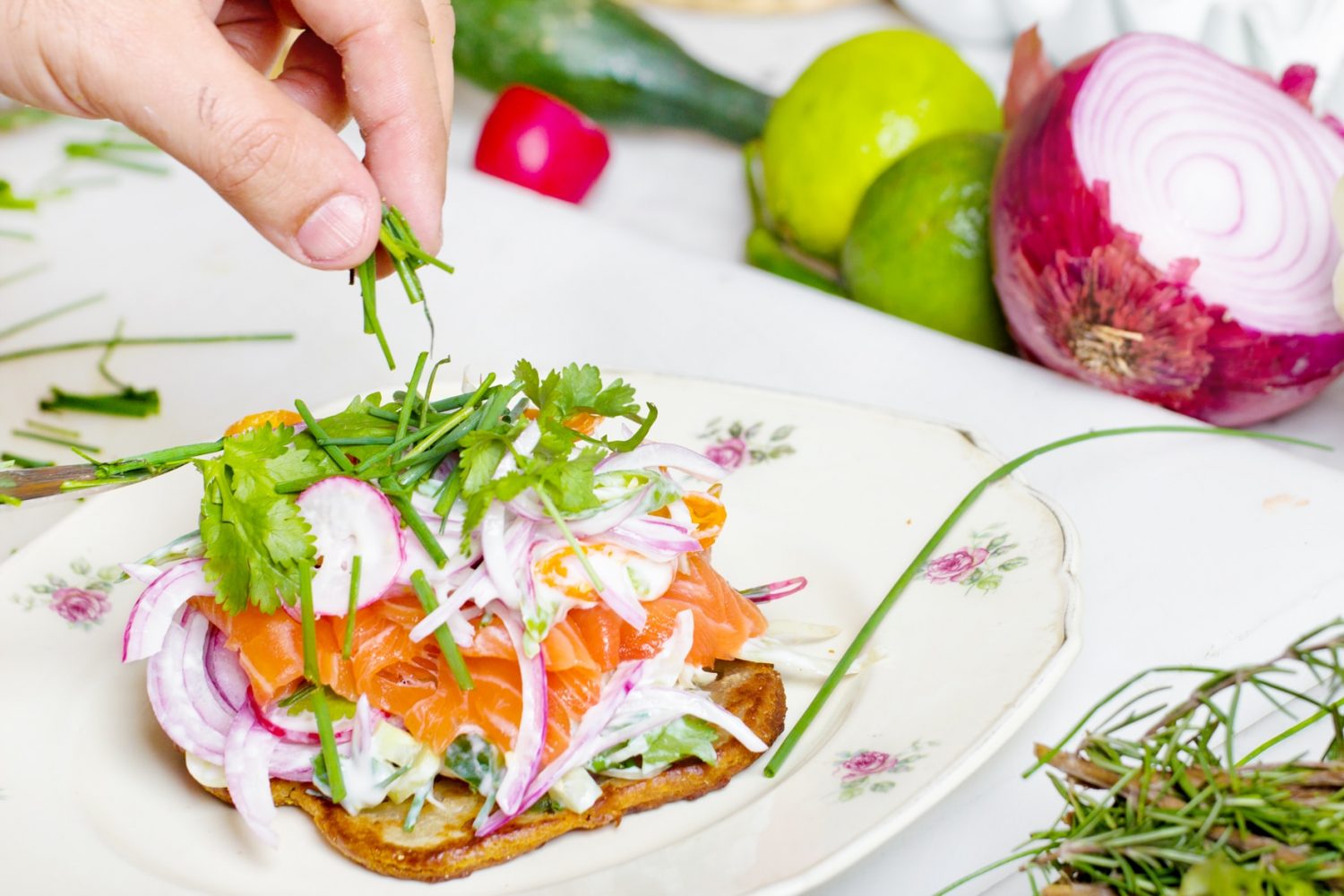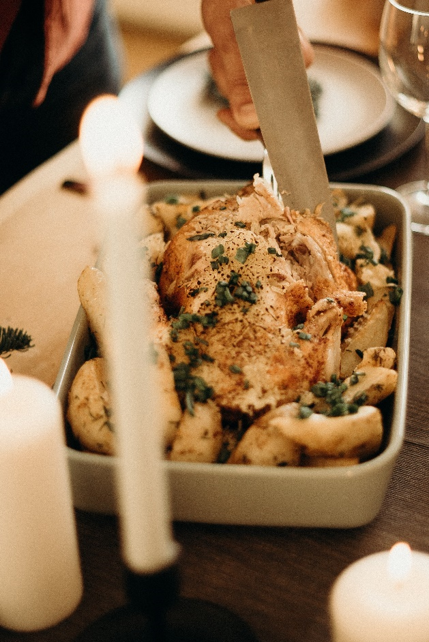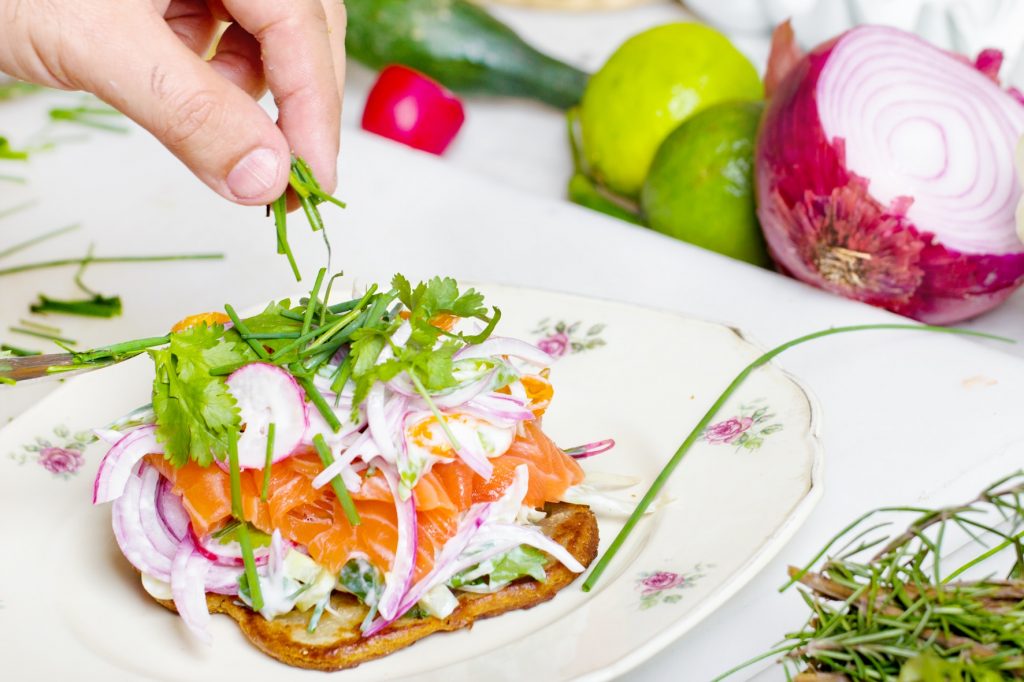
Welcome to the Meal Transformation Game
Many people who are looking to improve their eating habits believe that meal plans are the answer. The only problem? Diet plans usually don’t help people make any lasting progress, and they rarely last. So, instead of prescribing yet another doomed eating regimen, check out the meal transformation game to transform any diet sustainably.
Why Do Diets Fail?
The main reason why most diet plans fail is that they don’t leave any room for human error. Let’s be honest, we are not perfect! Once in a while, we might have that extra glass of wine. And this is completely fine when you consider that, for example, 80% of the time, you’re eating the foods that nourish your body to maintain a healthy weight or lose weight.
The other 20% are foods or drinks you enjoy having but aren’t the best option for your health and fitness goals. Remember: the aim here is to become a BETTER version of yourself and not PERFECT. I’ve seen hundreds of clients achieve amazing results with improving their diet, which allows some room for all types of foods. Instead of rigidly following a meal plan, which is both mentally and physically exhausting, you can have that piece of cake on occasion.
Another major reason why diet plans fail is their focus on nutrients. Real people don’t eat “nutrients”. We eat food. We eat meals, often with other people. We eat meals that match our cultural background and social interests. And we rarely measure things precisely.
There’s always an exception, for example, with professional athletes or bodybuilders who make money from their bodies and athletic skills. They use meal plans to prepare for training and competition.
A prescribed meal for an athlete might look something like this:
• 1/4 cup dry oats
• 3 oz turkey breast
• 1 cup steamed broccoli
• 5 almonds
• 1 omega-3 supplement
• 1 cup green tea (unsweetened)
But most of us don’t need that level of surgical precision. We don’t normally eat “ounces” of things, or refer to food by their nutrients (like “omega-3 fatty acids”).
Instead, we eat foods like:
• hamburgers
• tacos and burritos
• salads
• pasta and noodles
• sandwiches, wraps, and pitas
• stews and curries
• cereal and granola
• stir-fries
• casseroles
“It’s not about perfect. It’s about effort. And when you bring that effort every single day, that’s where transformation happens.”
Jillian Michaels

What Can Go Wrong With a Diet?
When we try to follow rigid diet plans, a lot of things can go wrong.
Scenario 1: You don’t stick to the plan. No matter how enthusiastic you are, meal plans can be tough to follow. This is normal. Life can get in the way. It’s always someone’s birthday, kids get sick, bosses expect you to work late, or you get busy. Sometimes, you simply don’t feel like having a protein bar at 10 am. What’s more, even if you’ve actually paid to have someone make your plan, you might find yourself rebelling against it in subtle (or not-so-subtle) ways. This is also normal. Unfortunately, it means you might not get the results you hope for. For instance, a meal plan you hoped would help you lose weight could actually encourage you to gain weight instead.
Scenario 2: You follow the plan perfectly. In fact, you follow it too well and for too long. Most diet plans are meant to be temporary. They’re designed to help a person get to a specific short-term goal, like dropping a few extra pounds before a wedding, learning to manage blood sugar, or cutting weight for an athletic competition. Our bodies can usually adapt to a rigid way of eating for a short period of time. But if you’re too strict for too long, you could wind up with disordered eating habits and lasting health consequences.
Scenario 3: You follow the plan for a little while, but it sucks. It isn’t sustainable. It doesn’t make you feel better. It doesn’t keep you sane. Maybe you see some short-term results. But you hate living and eating this way. You never want to see another stupid piece of lettuce or 4 ounces of chicken. Eventually, you get so turned off by the process that you regress or quit altogether. You conclude that “eating healthy” sucks. And you miss your big chance to learn how to make healthier, more enjoyable, more lasting, and real changes.
What Should You Do?
The bottom line is that if you want to eat better, you don’t have to get weird about things. You don’t need to weigh and measure everything or count out your almonds. Ask yourself: “Is someone paying me to do this?” If the answer is no, you likely don’t need this kind of approach. You just need to think about what you’re already eating, and how you could make it a little bit better. This means fiddling and adjusting. Making small changes and improvements to what you normally eat and enjoy, one small step at a time. Think about a spectrum of food quality rather than “bad” or “good” foods.

The Meal Transformation Game
I love to use this method with my clients, and it works. It’s so simple, which is what they love about it. Think of it as a game. The game is called, “how can you make this meal just a little bit better in every situation?” The game is perfect to be played when your choices are limited. For example, when you’re traveling, eating at work, or at a cafeteria. How can you eat a healthier meal while still being realistic and without trying to be perfect? Tip: It’s a great game to play with your coworkers.
Let’s begin by thinking about how you can transform dinner. Here’s how that “food spectrum” might look in daily life, with a sample day of eating.
Stage 1
It’s 8 pm. You’ve just come home after a hectic day at work. All you want to do is put food into your stomach and zone out in front of the TV. You can’t even imagine preparing anything more complicated than boxed macaroni ‘n’ cheese right now. Ketchup and hot dogs are as fancy as it gets.
Stage 2
Same concept, but:
• You’re adding some extra protein with the help of a rotisserie chicken leg that you grabbed at the grocery store on the way home.
• You’ve added a side salad, just grabbing a few handfuls of pre-washed greens out of a bag.
• You’ve whipped up your own pasta.
• Work is still on your mind, and a couple of drinks will take the edge off.
Stage 3
Things are getting fancy.
• You’re upping the protein with a little more chicken.
• You’re having a little less pasta.
• You’ve also added a nice big salad to the mix.
• You’ve cut the booze to 1 drink.
Plus, you’re sitting at the dinner table, instead of flopping down on your couch or standing over the sink.
Stage 4
Again, we’re playing at a pro-level.
• You can whip up a delicious salad in 3 minutes flat and you have some pre-cooked quinoa on hand.
• That rotisserie chicken is still a fast, convenient option, but now it’s got some healthy buddies.
• You’re indulging in a single glass of good wine these days, and you take time to savor it.
Meal Transformation Is Not About Reaching Perfection
If you’re at stage 1, all you have to do is shoot for stage 2. Or stage 1.5. If you’re in stage 2, play with getting to stage 3. And if you’re stage 3, heck, you can stay where you are. You might never get to stage 4. Or it might only happen at times when you’re relaxed and have a little extra time. Stage 4 might only happen on Sunday night, whereas the rest of your week is a mix of stages 1, 2, and — if you’re super lucky — 3. And that’s OK. How far you progress along the continuum all depends on what YOU want, what YOU need, and what YOU can reasonably do, right now. Over time, things can change. Play YOUR game.

Still Not Convinced This Simple Approach Works?
I don’t blame you. The media has always shown that diets are hard and we need to suffer to see results. You know how the saying goes: “no pain, no gain.” Well, that’s old school. Welcome to the 21st century. Numerous clients who worked with us successfully lost over 8 kg (18 lbs) in 4 months or less using this method. The key is not to binge or splurge out. It’s about discovering balance where you can enjoy all foods but in moderation. One of our most successful tools is keeping our clients accountable with daily pictures of their meals. By doing so, they can learn as fast as possible how to transform their meals. So, if you want to transform your meals to help you get in shape, lose weight, and feel better, get in touch with us on www.brigopt.com.
• No more suffering with fad diets.
• No more yo-yo dieting.
• Enjoy food whilst losing weight.
• Go to any social event without the worry about breaking your diet.
• See fast, but most importantly, lasting results.
Written by,
Michael B.
Body Transformation Coach for women who want to look and feel great.
Contact me on Almost Essential.



